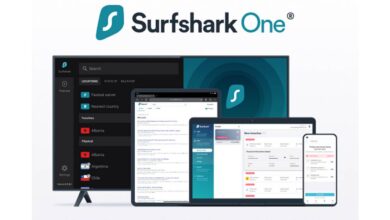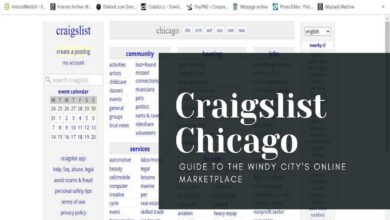As you might know, Golang serves for elaborating web apps. Despite the fact that it’s nowhere near as popular as JavaScript, according to the TIOBE Index, it’s a step from being listed among the ten most dominant programming languages of today. Without denying that an ample diversity of Golang frameworks streamlines development, it can be problematic to choose the most appropriate technology from this extensive variety. In this overview, we will explore the most in-demand frameworks to guide you in creating an expandable and swift website. Whether you’re new to Golang or have tried it out previously, explore our rundown for deeper insights into the subject.
The history of Golang development in brief
Suggested by Google’s engineers back in 2007, the language was invented for elaborating extensive and intricate systems in an undemanding but potent way. Around the same time, its first frameworks appeared.
Those who stood at the origins of Golang were moved by the ambition to deal with the imperfections of, for instance, C++ and Java, which were deemed to be overly convoluted, arduous to master, and, generally, snail-paced.
Its inner structure was inspired, among other things, by C, Pascal, and Oberon. The syntax of this statically-typed language has a certain resemblance to C. However, its frameworks are distinguished by supplementary capabilities like automatic garbage collection, robust multithreading support, and an abridged type system.
The compelling merits of Golang and its frameworks are, undoubtedly, their straightforwardness, uncomplicatedness, and terse and uniform structure. If we touch upon its flaws, these narrow down to the lack of support for generics. This particular demerit tends to make some types of programming more cumbersome than they would be otherwise. Furthermore, the error correction mechanism is believed to be unnecessarily convoluted, which can lead to generating overly template scripts.
On the whole, Golang web development, up until this day, remains a well-liked pick for devising Data Science solutions, networking apps, servers, microservices, diverse forms of distributed systems, etc. To sum up, with the steady increase in the number of the technology’s followers, it seems credible that Golang frameworks and the language itself won’t cease to expand.
Golang web frameworks to consider when envisaging an IT initiative
Below are some of the sought-after frameworks that you can keep in mind when thinking through the best matching technology stack for your IT initiative.
Gin
This is undeniably reckoned among the top Golang web frameworks. It’s not new and boasts a nine-year history. Up until today, it’s widely acknowledged, among other things, for its clean structure, excellent performance, and well-thought-out routing mechanism that is backed by the httprouter package. This tool is employed by behemoths like Uber, Dropbox, and Salesforce.
Gin’s capabilities encompass configurable logging, request routing, middleware support, and streamlined error correction. It’s notable for its low memory footprint as a result of leveraging a bespoke high-speed HTTP router. Moreover, scarce frameworks are as optimal for elaborating versatile APIs and interacting with RESTful APIs as Gin. This is possible by virtue of capabilities such as request parsing, validation, and response serialization. That’s why this Golang website framework is often a favored selection for engineering microservices.
Akin to other frameworks, Gin also has minuses. These are deficiencies in its error management and insufficient ORM and database migration backing. The latter disadvantage is compensated by its mergers with external libraries like GORM and SQLx.
Echo
This swift and uncluttered instrument emerged seven years ago to expedite and facilitate Golang web development. Its plain routing syntax with support for URL parameters and regular expressions, well-thought-out feature set, and scalability make it the optimal pick for designing RESTful APIs and apps. Alongside other merits, it boasts smooth parameter parsing, in-depth documentation, and ample middleware for caching, compression, and response caching. Therefore, this is a much-loved choice among businesses like Thumbtack, Hootsuite, and Revolut.
Its most serious flaws are excessive minimalism, incompatibility with certain libraries, and insufficient templates and backing for authentication and authorization. The latter complication can be mitigated by integrating Echo with Auth0 or Firebase.
Revel
This full-stack Golang website framework emerged twelve years ago and is distinguished for its convention-over-configuration approach. Its request routing, high-capacity ORM, various templates, database harmonization, and debugging capabilities allow brands like AppLovin, Rent the Runway, and Cockroach Labs to efficiently build intricate systems. Perks like clustering and load balancing contribute to apps’ ability to tackle a sizable number of concurrent connections. In addition, its Revel CLI tool and other utilities expedite the project setup and boilerplate code production.
However, its extensive codebase might seem intimidating for some engineers who will therefore prefer more laconic frameworks. Its constrained versatility doesn’t help either and renders it inappropriate for certain tasks, e.g. microservice creation.
Beego
This is another ‘veteran’ on the market and a full-stack instrument famed for its modularity and internationalization. This is a well-liked choice of some giants, e.g. Chinese-based Zhihu and Tencent. As for its architecture, it supports the Model-View-Controller (MVC) pattern. With it, one can effortlessly break down enterprise-grade solutions into components for their seamless management, scaling, and maintenance.
Similar to other Golang web frameworks, Beego backs up object-relational mapping, request routing, middleware, and templating. Furthermore, automated scaffolding, rapid form validation, robust session management, and options like the Bee tool allow tech specialists to effortlessly frame even cumbersome IT solutions.
Nonetheless, it’s deemed to be not as swift as its alternatives, and you can’t use it for microservices. It’s also incompatible with certain use cases due to Its rigid adherence to the MVC pattern.
Buffalo
This relatively recent ecosystem is able to significantly facilitate development with its rich assortment of command-line instruments and templates and a diversity of plugins. Owing to them, engineers are in the right position to swiftly augment their products with needed controllers, models, views, etc. Its compelling scaffolding options allow you to obtain a fully functional turnkey website provided that you rely on a common project structure. You can straight away see any changes you implement to the code thanks to the automated hot-reload feature.
Like some other Golang web frameworks, Buffalo pursues convention over configuration. This relieves engineers from the need to configure required settings and results in writing scripts that are easily maintainable. Additionally, this instrument facilitates asset compilation, request routing, and middleware, and it’s perfectly compatible with external databases and front-end frameworks. This makes it a go-to pick for development, be it an uncomplicated single-page app or an enterprise-grade system.
However, compared to other frameworks, this one is challenging to master due to its convoluted architecture and the abundance of features. The former can also impact its speed by reason of resource-intensive memory usage. Finally, copious templates and script generation can somewhat sophisticate the development of a tailored-fit website.
Kit
As in the previous case, this is a relatively new Golang website framework suggested six years ago. Unlike the aforementioned ecosystem, its modularity and assortment of composable primitives are best for working with microservices (not with full-stack apps), as well as for furnishing tailored-fit web services. This is achievable through its sets of independent, reusable packages that are adroitly combined together to help you sidestep undesirable dependencies.
Again, unlike the previously described frameworks, Kit is simple, lightweight, and extremely adjustable with its packages and primary toolkit. It also offers integrated metric management, thoroughly documented APIs, and support for tracing and logging.
Iris
This is yet another highly performant Golang website framework in our rundown. It’s successfully employed by Microsoft, IBM, Intel, and other world-renowned brands. This can be attributed to its rapid HTTP router that is capable of processing numerous requests and coping with concurrent connections. Thus, the technology is a frequently used option for launching chat apps, gaming platforms, and real-time sites.
Not all of the aforementioned Golang frameworks support the creation of both compact and extensive products with the same efficiency. Iris, in turn, is particularly suited for this task owing to its extensibility. It can be tailor-fitted to project requirements by using your own plugins and middleware.
Furthermore, Iris is recognized for its impressive selection of ready-to-use plugins and modules, template engine, middleware support, database integration, superb debugging, etc. It’s also celebrated for its comprehensively documented APIs and low memory usage. Among its flaws, we can recall the shortage of third-party libraries.
Fasthttp
This HTTP server Golang website framework is believed to be more nimble and economical in memory usage compared to the habitual net/http library. This is possible thanks to its winning memory allocation and downsized garbage collections. Owing to these strengths, this instrument is fully capable of coping with numerous concurrent requests, which allows for greater app scalability. What is more, it supports, inter alia, TLS encryption, HTTP/2, and WebSockets.
A stripped-down design with a narrow selection of packages distinguishes Fasthttp from other Golang web frameworks. Although this peculiarity favorably affects the capacity, the minimalistic toolkit might not contain sufficient options for comprehensive development.
Gorilla
This is unquestionably one of the top Golang web frameworks available today. It’s utilized by Docker, IBM, and other businesses. Its convenient modular structure allows you to base the development on selected components, while its numerous packages, e.g. mux, handlers, and securecookie, provide functionalities for authentication, sessions, cookies, and more, and enhance website security. Mux, in particular, is recognized for its router for HTTP requests that help engineers define URL patterns and map them to handlers, which is ideal for creating intricate products. Additionally, Gorilla boasts routing, middleware, and WebSocket support.
Fiber
Our rundown of Golang web frameworks is rounded off with this lightweight and speedy instrument. Initially, it was specifically designed to take the place of Express.js.
Based on the Fasthttp package, it efficiently copes with avalanches of traffic. This makes it a go-to pick for video streaming and editing platforms like ByteDance, Mux, and more. It’s also ideal for producing microservices and APIs.
Analogous to some of the aforementioned frameworks, Fiber supports WebSockets and middleware. In addition, it boasts versatile routing possibilities, including parameterized routes and wildcards, and supports sought-after templating engines like Handlebars and Pug. This enables you to envision real-time programs and smoothly augment them with functionalities. Furthermore, its robust context handling expedites request and response management.
The technology is believed to be one of the fastest Golang web frameworks, with a lower memory footprint than, for instance, Gin and Echo. Additionally, its clean and uncomplicated syntax is not difficult to master.
Go-zero
The main difference between Go-zero and other Golang web frameworks is its focus on microservices and high-performance APIs. Its modular architecture supports diverse transport protocols, HTTP and gRPC, to name a few, and in-demand data storage options, e.g. MySQL, PostgreSQL, and Redis. No surprise it’s actively employed by Chinese Didi Chuxing and other projects.
The in-built code generator, goctl, with its command-line interface substantially aids in writing boilerplate code based on the protobuf definition and thus, constructing scalable microservices. The resulting code is well-suited for service definition, service implementation, and client implementation.
Kratos
Kratos is somewhat similar to Go-zero and other microservices-oriented Golang frameworks. It was invented by Bilibili, a Chinese-based video-sharing website, and further adopted by Baidu, Xiaomi, Tencent, etc.
Kratos is different from other top Golang web frameworks in several ways. It encompasses a distributed tracing system, a service discovery tool, an API gateway, and other tools and libraries intended for the development of complex microservices. In addition, it’s driven by the standard Golang context for passing request-scoped values between middleware and handlers. This facilitates the management of this data.
Final thoughts on top Golang web frameworks
Current Golang frameworks offer a rich diversity of features. The choice of the most suitable one depends on your needs and resources. You must also take into account the technology’s peculiarities, strengths, and weaknesses that we’ve outlined in this article.
Consulting a well-versed software development company with a proven track record with various frameworks will help you make an informed decision proceeding from their insights and recommendations. This will not only save you time and money in the course of your IT initiative but also guarantee successful outcomes.



